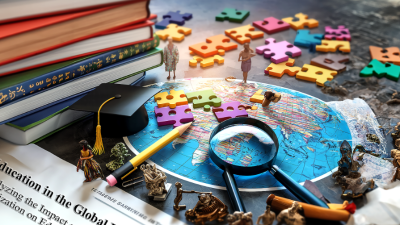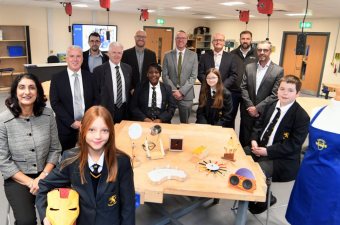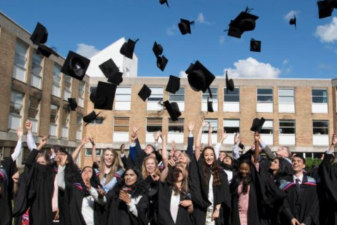Positive Impacts of Globalization on Education

- Abundant Educational Resources
Globalization enables the sharing of educational resources worldwide. In the past, students may have relied primarily on local textbooks, teachers, and libraries to acquire knowledge. But now, through the internet, students can easily access high-quality courses, academic materials, and instructional videos from around the world. For example, even in remote schools, students can watch open classes from world-renowned universities like Harvard and Oxford and learn cutting-edge knowledge. This has greatly broadened students' horizons, allowing them to think and explore at the forefront of global knowledge.
Globalization has also facilitated the exchange of educational information. The constant exchange of educational philosophies and teaching methods across different countries and regions allows teachers to learn from and apply advanced international models to their own teaching. For example, Finland's education focuses on fostering students' independent learning and creativity. As this philosophy has spread, many countries are considering how to adjust their own educational approaches to better meet the developmental needs of their students.
- Cultivating a Global Perspective
In the context of globalization, education is increasingly prioritizing the development of students' global perspectives. Students are no longer limited to understanding their own national affairs; they are now also focused on global politics, economics, and culture. By studying the history, geography, and culture of different countries, students can understand and respect cultural differences and enhance their cross-cultural communication skills.
For example, in international schools, students from different countries and regions interact with each other in their daily studies and daily lives, gaining an understanding of each other's cultural customs. This experience better prepares them for future work and life on a global scale. As they grow up, these students are more likely to become globally minded citizens capable of playing an active role on the international stage and contributing to solving global issues.
- Promoting the Development of Educational Technology
Globalization has accelerated the innovation and application of educational technology. To meet the learning needs of students worldwide, edtech companies are constantly developing new educational products and technologies. Emerging technologies such as online learning platforms, educational software, and virtual reality teaching are constantly emerging.
These technologies break down the constraints of time and space, making learning more convenient and efficient. Students can plan their learning according to their own schedule and pace, freeing themselves from the constraints of traditional classroom times and locations. For example, some students have taken programming courses offered by renowned international institutions through online learning platforms, improving their skills and laying the foundation for future careers in related fields. At the same time, the development of educational technology is also prompting teachers to continuously enhance their IT capabilities to better utilize these tools in their teaching.

Challenges Brought to Education by Globalization
- Increasing Inequality in the Distribution of Educational Resources
While globalization has brought abundant educational resources, it has also exacerbated the problem of unequal distribution. Developed countries enjoy an advantage in educational resources, boasting advanced facilities, highly qualified teachers, and ample funding. However, some areas in developing countries still face a shortage of educational resources.
For example, in some African countries, many schools lack basic teaching equipment, and teachers' salaries are low, resulting in a significant loss of talented teachers. This prevents students in these regions from enjoying high-quality education, widening the gap between them and students in developed countries at the starting line.
High-quality online educational resources often require payment or require high internet connection requirements, making them inaccessible to students in economically disadvantaged regions.
- Cultural Differences
Different countries and regions have their own unique cultures, values, and educational philosophies. Cultural clashes can arise in global educational exchanges. For example, the West emphasizes individualism and innovation, while Eastern culture places more emphasis on collectivism and inheritance. When students and teachers from different cultural backgrounds meet in an educational environment, misunderstandings and conflicts may arise if cultural differences are not properly handled. For students, they may feel confused in the process of adapting to different cultural educational concepts, which may affect their learning outcomes. In addition, language barriers are also a major challenge facing globalized education. Although English is widely used in international communication, there are many other languages in the world. Poor communication between different languages may hinder the effective transfer of knowledge and the all-round development of students. Some students from non-English speaking countries may not be able to fully understand and express their ideas due to language problems when studying international courses or participating in international academic exchanges.







